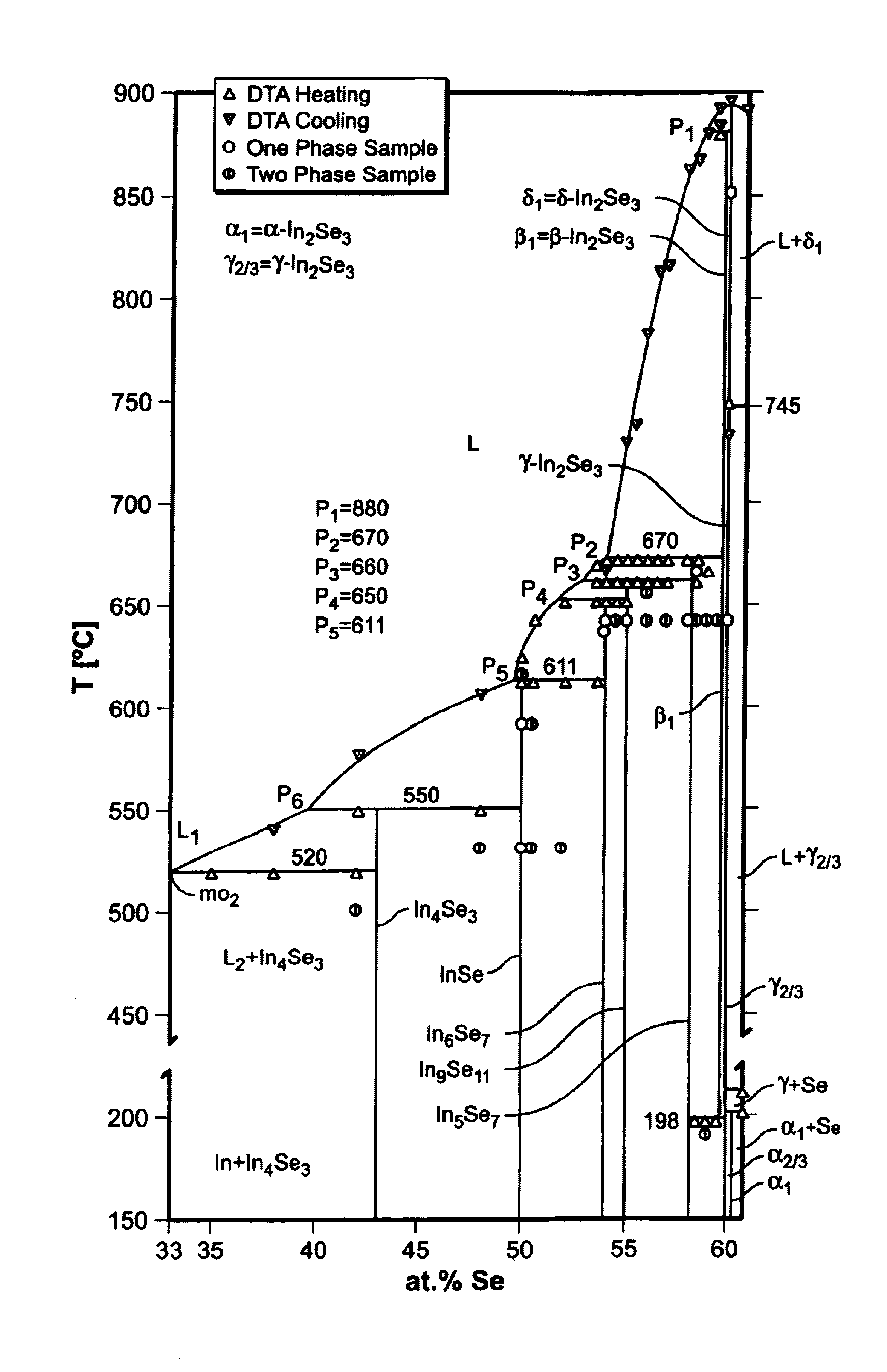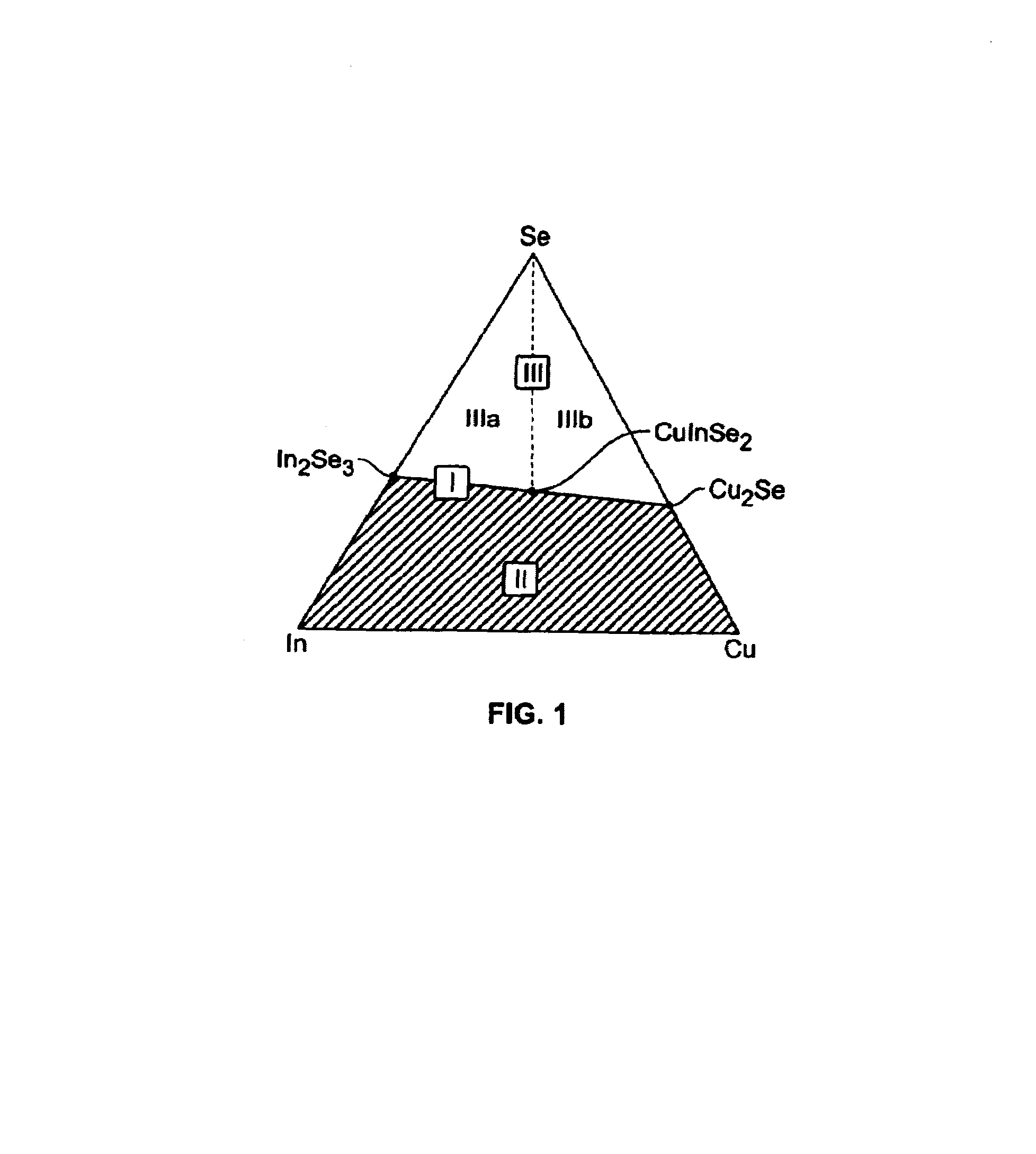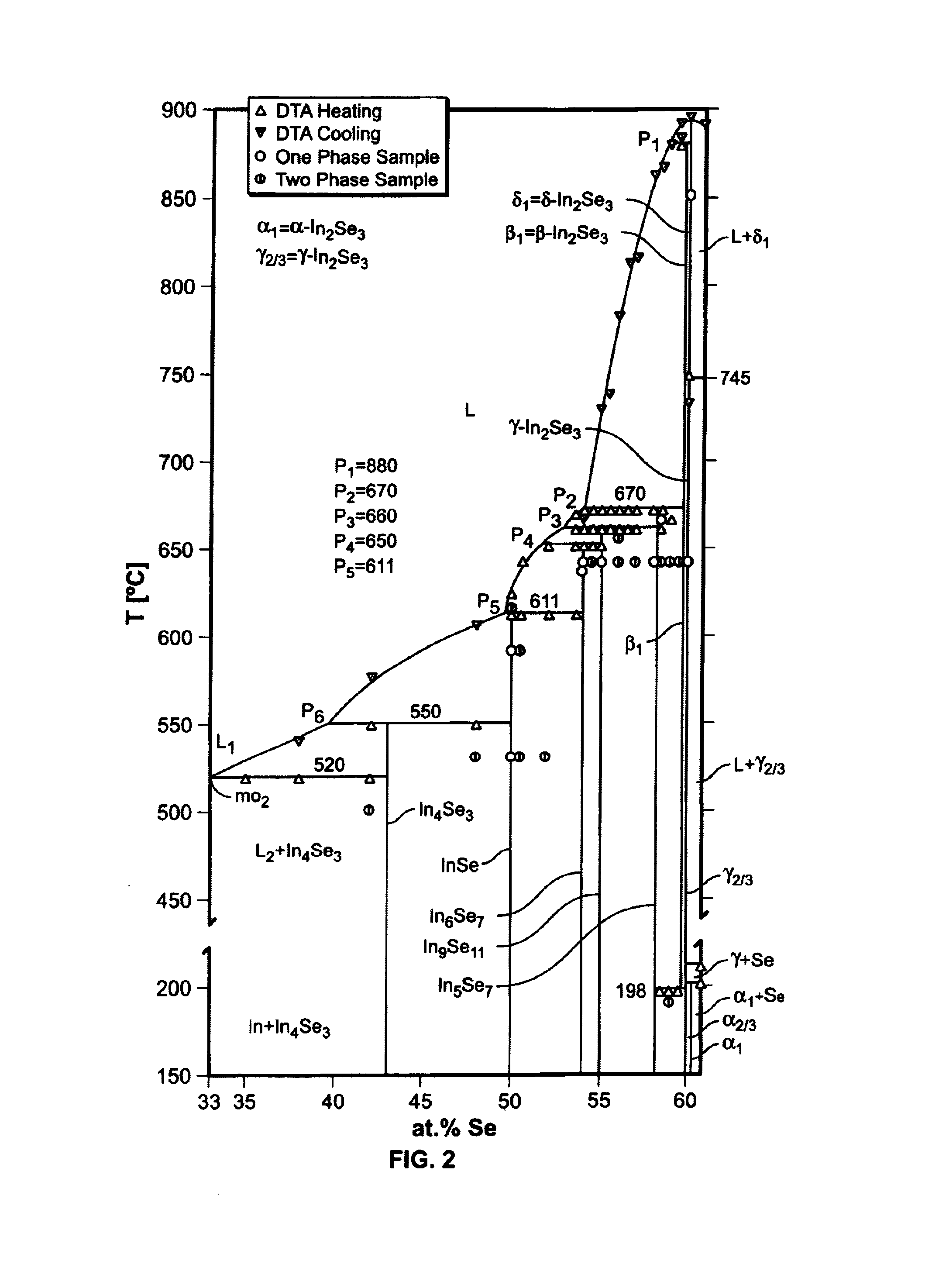Preparation of compounds based on phase equilibria of Cu-In-Se
- Summary
- Abstract
- Description
- Claims
- Application Information
AI Technical Summary
Benefits of technology
Problems solved by technology
Method used
Image
Examples
Example
[0178]The results in this Example and those in Examples II and III prove that In2Se3—Cu2Se indeed constitutes a quasibinary system: Along the In2Se3—Cu2Se isopleth of the Cu—In—Se system we have found a total of 10 critical tie lines, and all these lie in the plane of the section. Furthermore, the data we have obtained for the adjacent subsystems, which we describe in Examples II and III, reveals that all tie lines become parallel to the In2Se3—Cu2Se isopleth as one approaches the plane of this isopleth.
[0179]4.1 Stable Equilibria of the In2Se3—Cu2Se Subsystem
[0180]FIG. 6 presents the major result of this publication, the In2Se3—Cu2Se section of the Cu—In—Se phase diagram. To obtain this diagram we investigated a total of 73 different alloys with the experimental methods described in section 1. A dense sampling of the composition space was necessary to distinguish between the primary crystallization surfaces of Cu2Se and δ-In2Se3, and between those of the ternary phases δH,δR (CuIn3...
Example
[0225]The component system In—Se has already been described in Example I. However, since this system is particularly important for the phase equilibria of Cu—In—Se we briefly repeat its most important properties here. FIG. 23 presents the new In—Se phase diagram In—Se published by Gödecke et al. (J. Phase Equ. 19 (1998), 572–576). The miscibility gaps L1+L2 and L3+L4 have been re-determined, and so were the positions of the monotectic points at mo2 (520° C.) and mo4 (750° C.). According to FIG. 23 there are seven different indium selenides that remain stable down to room temperature: In4Se3, InSe, In6Se7, In9Se11, In6Se7, γ-In2Se3, and α-In2Se3. For In2Se3 four different modifications have been observed: δ, β, γ, and α-In2Se3. Peritectic transformations at p1 through p5 lead to the following phases: β-In2Se3 (p1), In5Se7 (p2), In9Se11 (p3), In5Se7 (p4), and InSe (p5). The melts of alloys between the peritectica p2 and p5 in FIG. 23 tend to be subject to supercooling, in which case c...
PUM
 Login to view more
Login to view more Abstract
Description
Claims
Application Information
 Login to view more
Login to view more - R&D Engineer
- R&D Manager
- IP Professional
- Industry Leading Data Capabilities
- Powerful AI technology
- Patent DNA Extraction
Browse by: Latest US Patents, China's latest patents, Technical Efficacy Thesaurus, Application Domain, Technology Topic.
© 2024 PatSnap. All rights reserved.Legal|Privacy policy|Modern Slavery Act Transparency Statement|Sitemap



